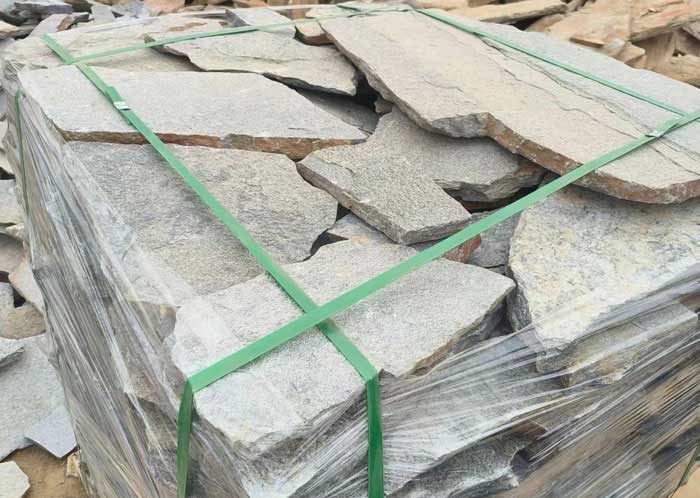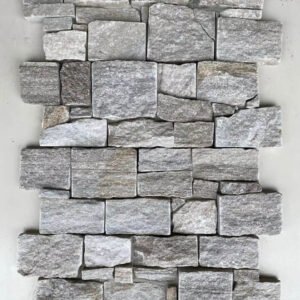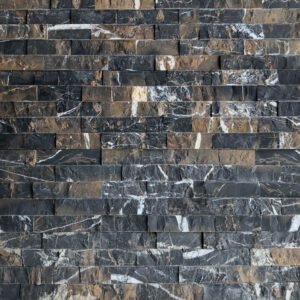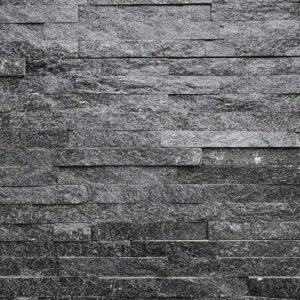Q: What makes Green Quartzite different from other green stones like green marble or jade stone?
A: Green Quartzite is significantly harder than marble—it resists etching from acids, doesn’t scratch easily, and withstands heat up to 1,200°C. Marble etches when lemon juice or vinegar contacts it; quartzite doesn’t. Jade stone and decorative serpentine lack the durability for exterior cladding and weather-harsh environments. Quartzite’s non-porous nature prevents water absorption, making it ideal for freeze-thaw regions where marble cracks and spalls.
Q: Is Green Quartzite quarried domestically or imported?
A: Our Green Quartzite sources from established US quarries, reducing shipping carbon footprint and lead time compared to imports from Brazil or Australia. Domestic sourcing ensures faster delivery (2-3 weeks standard) and direct quality verification. We maintain direct relationships with quarries, guaranteeing consistent material characteristics shipment to shipment.
Q: What’s the price difference between 20mm and 30mm thickness?
A: 30mm thickness costs approximately 30-40% more than 20mm due to increased material volume and weight. The 20mm option works for interior feature walls and applications with lighter structural load. 30mm suits exterior applications, high-impact areas, and projects where durability trumps weight concerns. Most commercial and residential exterior projects choose 30mm for the insurance it provides against long-term degradation.
Q: Does Green Quartzite require sealing after installation?
A: Quartzite’s non-porous surface doesn’t require sealing for basic durability. However, many contractors apply penetrating sealer after installation to enhance color depth and provide stain resistance for high-risk areas (kitchens, entryways). A quality stone sealer applied every 2-3 years in exterior applications provides additional protection against dust penetration into micro-voids. Interior applications rarely need sealing; water and mild soap clean thoroughly. Check manufacturer recommendations if custom adhesives or grouts were used.
Q: How do we handle loose random stones around windows, doors, and trim?
A: Dry-layout the pattern on ground, then cut individual stones as needed using a diamond-blade angle grinder. Cut from the backside to prevent face chipping. Mark cutting lines with pencil and wear appropriate PPE (goggles, dust mask, hearing protection). Fit cut pieces into place during installation. Random stone format actually simplifies trim transitions—cut edges look intentional, not forced. No pre-sized “window trim kits” needed; work with individual stones for seamless, custom integration.
Q: Can Green Quartzite be installed over existing concrete, brick, or block?
A: Yes. Concrete, brick, and block all accept quartzite cladding. Prepare the surface by cleaning with a pressure washer (2,500-3,000 PSI) to remove dirt, efflorescence, and loose material. For exterior applications, verify the substrate has adequate drainage behind it—water should not pool or remain trapped. Consider applying a water-resistant primer or bonding agent for maximum adhesion. Metal lath installation over masonry is recommended for exterior applications over 2 stories or in seismic regions, providing mechanical backup to adhesive bonds.
Q: What’s the typical coverage rate and how much waste should we budget for?
A: Loose random stone typically achieves 8-12 square feet per labor-hour during the installation phase (substrate prep adds additional time). Waste rates run 5-10% depending on pattern complexity and fixture interruptions (windows, doors, obstacles). Budget 10-12 additional square feet per 100 square feet installed to account for cuts and adjustments. Experienced installers achieve lower waste; first-time crews with complex patterns may run toward the higher end.
Q: How do we install Green Quartzite on a fireplace?
A: Fireplace installations follow the same basic process—clean substrate, apply polymer or epoxy adhesive, press stones firmly. Quartzite’s heat resistance (1,200°C+) exceeds fireplace operating temperatures, making it ideal for this application. No special heat-resistant adhesive required; standard thin-set works reliably. Leave expansion joints around the firebox opening (approximately 1/4″ gap) to accommodate minor thermal movement. Allow adequate curing time (48-72 hours) before fireplace use to ensure full adhesive set.
Design & Aesthetic Questions
Q: Can Green Quartzite work in modern/minimalist design schemes, or is it only for traditional/rustic looks?
A: Green Quartzite adapts to any design movement. Tight joints, level alignment, and careful color sorting create sleek, contemporary aesthetics. Varied spacing, mixed color distribution, and organic pattern embrace rustic traditions. The deep emerald tones complement both industrial (concrete, steel, exposed brick) and refined (marble, polished concrete, glass) design palettes. Architects leverage quartzite’s versatility—it’s equally at home in a Manhattan loft or a mountain cabin.
Q: How much color variation should we expect within a single shipment?
A: Green Quartzite features natural color variation—light green, medium sage, and deep forest tones all occur within the same quarry block. This variation is authentic and desirable; it creates visual depth and movement. Shipments typically show 15-20% color range within acceptable parameters. If you prefer more uniform color, request pre-sorted batches of single shade category—”medium green only” selections cost a premium but provide consistency. Most designers embrace natural variation as part of the material’s inherent beauty.
Q: What other materials pair well with Green Quartzite for mixed-material facades?
A: Green Quartzite complements: wood cladding (creating warm, organic contrast), concrete (emphasizing the stone’s refinement against brutalism), stainless steel (pairing natural texture with industrial precision), glass (transparent surfaces set off the stone’s solidity), and white/neutral-tone brick (creating monochromatic depth). Avoid pairing with highly polished materials that compete visually; let quartzite’s matte cleft surface provide texture contrast. Limit palette to 3-4 materials maximum to prevent visual chaos.
耐久性 & Maintenance Questions
Q: How long does Green Quartzite typically last in exterior applications?
A: Properly installed Green Quartzite lasts 50+ years with minimal degradation. Historical installations from the 1950s-1960s remain serviceable today. Durability depends on substrate quality, proper water drainage, and adhesive integrity. The stone itself doesn’t degrade; failures typically result from adhesive failure or substrate movement, not material breakdown. Quartzite outlasts most architectural materials—concrete, wood, and stucco all require maintenance or replacement within 25-40 years; quartzite still performs flawlessly.
Q: Does Green Quartzite stain easily?
A: Quartzite’s non-porous surface resists staining significantly better than marble, sandstone, or unsealed granite. Oil stains, rust, and weathering from bird droppings wash away with mild soap and water. For kitchen applications or high-stain-risk areas, a penetrating sealer adds protection. Once sealed, quartzite practically ignores contaminants. The stone’s inherent resistance to staining is one of its primary advantages over softer natural stones.
Q: What cleaning method should we recommend to end users?
A: Simple soap and water with a soft brush removes dirt and debris. Avoid harsh chemicals, acidic cleaners, or abrasive scouring pads. For annual deep cleaning, use a pressure washer at 2,000-2,500 PSI (no higher—excessive pressure can damage grout). For stubborn organic growth (moss, lichens in damp climates), a dilute bleach solution (1:10 ratio) applied and scrubbed lightly, then rinsed thoroughly, restores appearance. Sealed quartzite requires no special maintenance—treat it like any premium natural stone surface.
Q: Will Green Quartzite hold up in freeze-thaw climates?
A: Quartzite excels in freeze-thaw regions precisely because it’s non-porous. Water cannot penetrate the surface, so ice formation within the stone is impossible—the primary cause of spalling in marble, granite, and sandstone. Tested to ASTM C1026 standards (freeze-thaw cycling), Green Quartzite maintains full structural integrity over 50+ cycles. This resilience makes it an ideal choice for northern climates where other natural stones deteriorate within 15-25 years.
Cost & Value Questions
Q: How does Green Quartzite pricing compare to granite, marble, and cultured stone alternatives?
A: Green Quartzite typically costs more than granite per square foot but performs better in challenging applications (acid resistance, durability in freeze-thaw). Marble costs similar or slightly less but requires significantly more maintenance. Cultured stone costs 50% less initially but lacks authenticity, durability, and resale value. Total cost-of-ownership over 20 years heavily favors quartzite—no resealing, no repairs, no replacements. The higher initial investment pays dividends through reduced long-term maintenance.
Q: Are there minimum order quantities, and what do they affect?
A: Minimum order quantities begin at 50 square meters. Orders under 100 square meters may have extended lead times (4-6 weeks). Bulk orders over 200 square meters qualify for discounts (5-15%) and custom color sorting at no additional charge. Smaller projects can combine with other clients’ orders for better pricing or accept standard mixed-shade assortments. Discuss minimum order options with sales to optimize project economics.
Q: What’s included in a standard quote?
A: A complete quote includes: stone material (per square meter or per piece), adhesive recommendations (not always included in stone price), freight/delivery charges (significant for weight), site inspection/consultation (may be complimentary or fee-based), and installation labor (if available). Request clarity on what’s included before comparing quotes. Material cost alone doesn’t reveal total project cost; freight and labor represent 30-50% of typical installation budgets.
Shipping & Logistics Questions
Q: What are typical lead times, and do you stock inventory?
A: Standard lead times run 2-3 weeks from order confirmation for domestic quarries. We maintain strategic inventory at regional distribution centers, allowing expedited delivery in some areas (5 business days). International requests extend to 6-8 weeks. Contact our team with your project timeline; we’ll confirm availability and delivery windows. For time-sensitive projects, expedited sourcing and air freight options are available at premium pricing.
Q: How is Green Quartzite packaged to prevent damage during shipping?
A: Individual stones wrap in protective paper and pack into corrugated boxes with foam corner protection. Boxes stack on wooden pallets with separation layers preventing stone-to-stone contact. Full pallet shrink-wrapping secures the shipment. This multi-layer approach keeps damage rates below 2%. Damaged stones identified upon arrival receive replacement shipments—we cover freight on legitimate damage claims. For projects with tight tolerances on stone quantity, inspect shipments immediately and report discrepancies within 24 hours.
Q: Can we return or exchange stones if they don’t match our expectations?
A: Stones matching our technical specifications and fitting quality standards cannot be returned. However, if material arrives damaged or fails to meet documented specifications (thickness tolerance, color description, water absorption data), we arrange replacement at no cost, including freight. Always verify shipments match your approved sample before installation begins. Communication with our team before finalizing orders prevents misunderstandings about color variation, sizing, and finish characteristics.
















